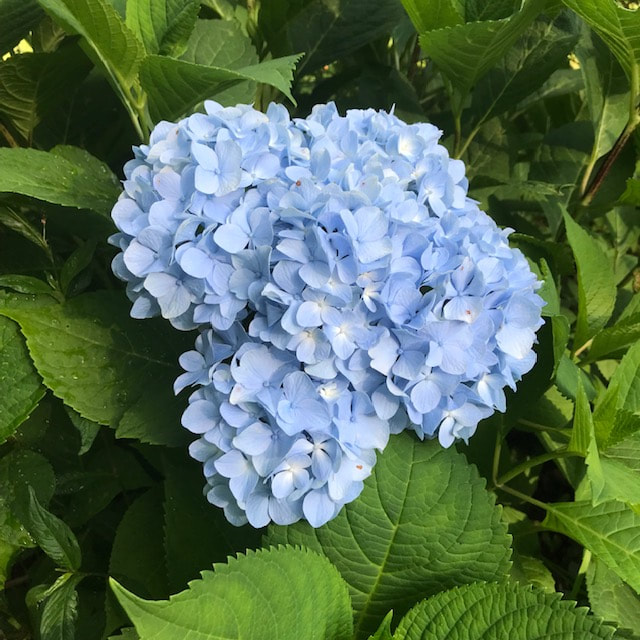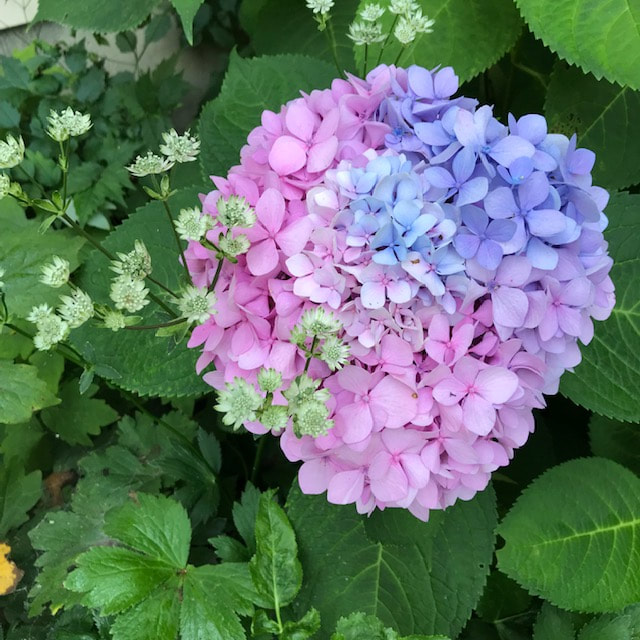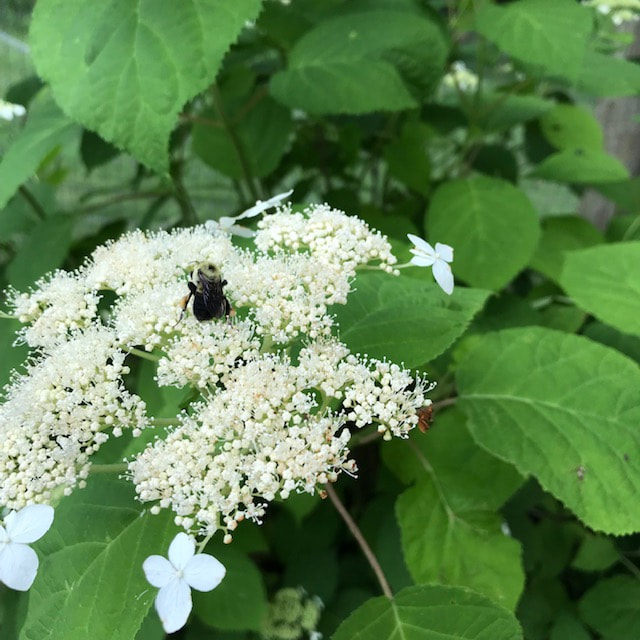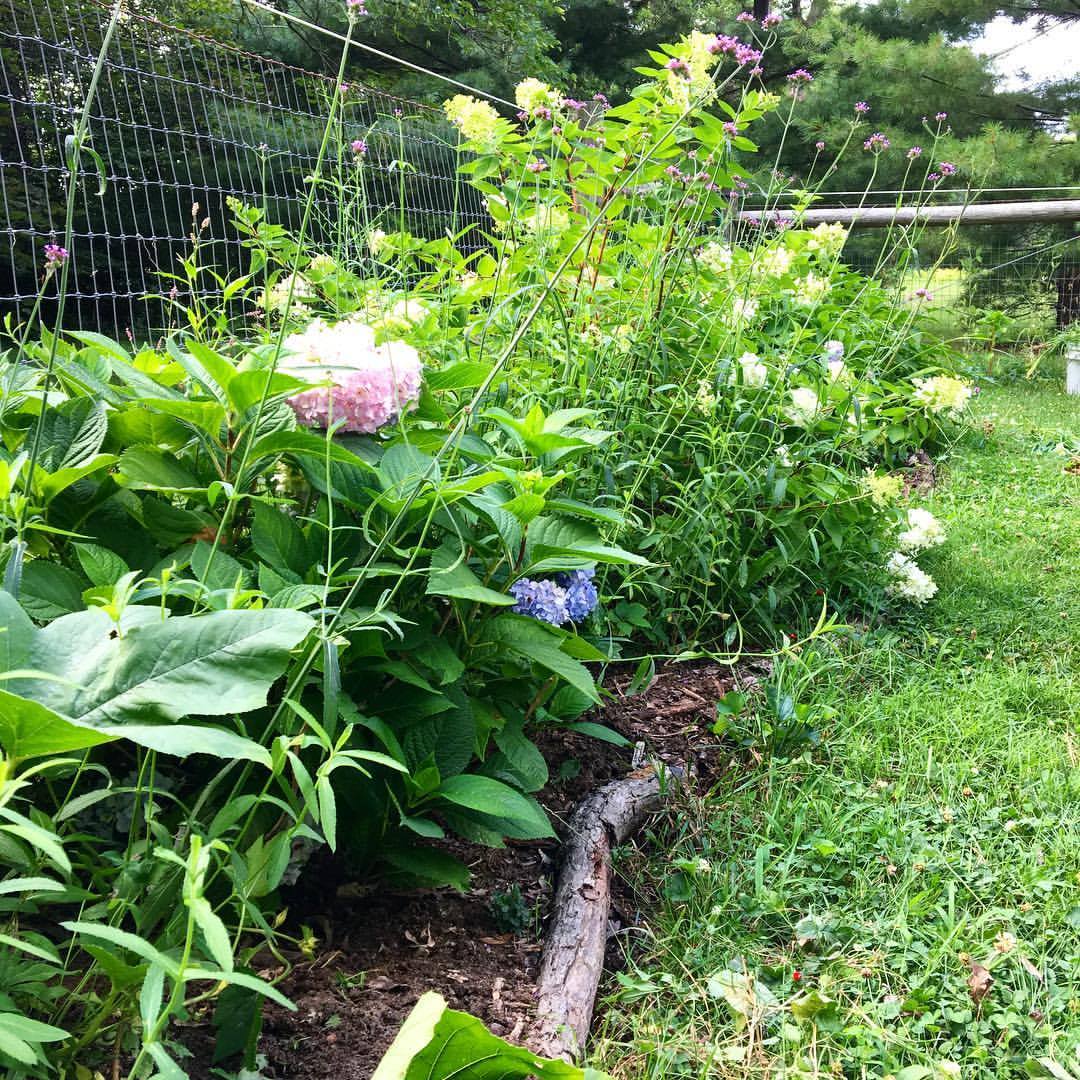|
If you have been to Wren's Gate, you might notice that there is so much shade. For a long time I was under the impression that hydrangea prefers shade. But then I began to notice the amazing hydrangea on my friend Vio's farm. www.harvestandblooms.com/ There is a beautiful stand of old hydrangea in front of her farm house. Many hydrangea prefer full sun to part shade. This made me think of the hydrangea I have tucked between the chicken coop and the back of the shop that has NEVER, not once bloomed. Have I moved it? No. On the list? Yes.
So let's figure out why your hydrangea aren't blooming. First, what type of Hydrangea did you plant? If you are like me, that plant tag went in your pocket and then through the wash and is now lost somewhere behind the dryer. Does your hydrangea bloom earlier or later in the summer? What shape are the flowers? What shape are the leaves? Blooms on old wood and therefore earlier in the summer-
Prune out weak or winter-damaged stems in early spring. Winter hardy to USDA Zone 6. Notice this! Here in Central Illinois we are Zone 5b. So your Aunt Florence may have the perfect micro climate that stays warm and protected all winter but we can't all be Aunt Florence. From the Missouri Botanical Garden: Hydrangea can be grown in USDA Zone 5 with protection (e.g., mulch and burlap wrap), but may lose significant numbers of flower buds or die to the ground in harsh winters, thus respectively impairing or totally destroying the bloom for the coming year. Plants grown in USDA Zone 5 should be sited in sheltered locations (Aunt Florence's house) and given additional winter protection, like mulch and burlap, for the purposes of minimizing the risk of loss of significant numbers of flower buds or possible die-back to the ground in an extremely harsh winter. Regardless of protective measures taken, most bigleaf hydrangeas simply will not bloom (or will bloom poorly) in some years because of a variety of winter occurrences beyond the control of the gardener (e.g. low temperatures, sudden wide temperature fluctuations, icy conditions, late frosts). So the thing here is, if you have those beautiful blue and pink balls of flowers, enjoy them in the years that they bloom for us and cut yourself some slack. Blooms on new wood and later in the summer-
Species (Hydrangea arborescens) is native to southern Missouri. 'Annabelle' is a naturally occurring cultivar which was discovered in the wild near Anna, Illinois. I think this is why pollinators such as the bee above like them best. Notes made from one of my most frequently used web sites: Missouri Botanical Garden https://www.missouribotanicalgarden.org/plantfinder/plantfindersearch.aspx Accessed 14 Nov. 2020
2 Comments
|
Becky Newtonwide-ranging; well being and mindfulness, nature, wildlife and gardens; micro adventures, exploring and the outdoors. The simple things with a hopeful dose of wit, intelligence and substance. Archives
November 2020
Categories |




 RSS Feed
RSS Feed